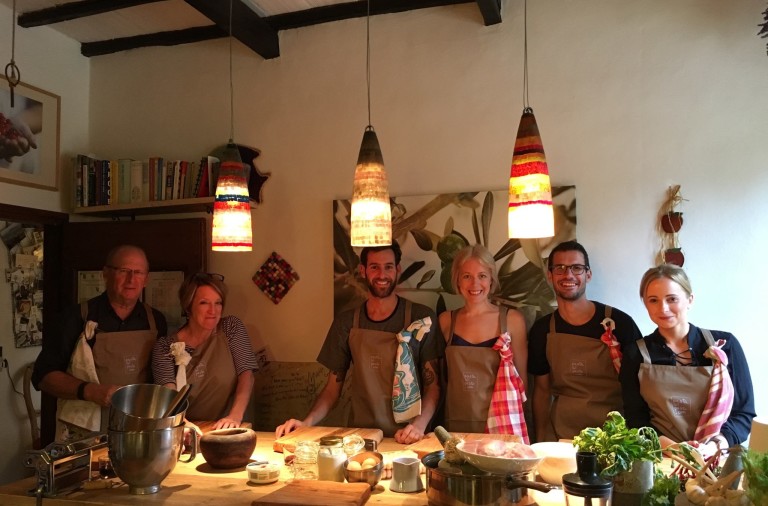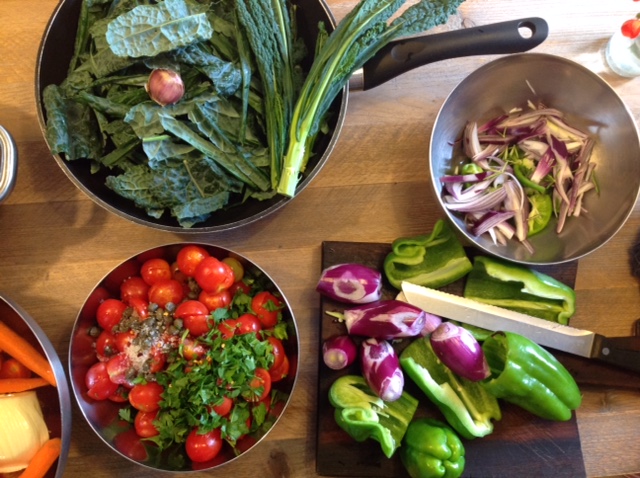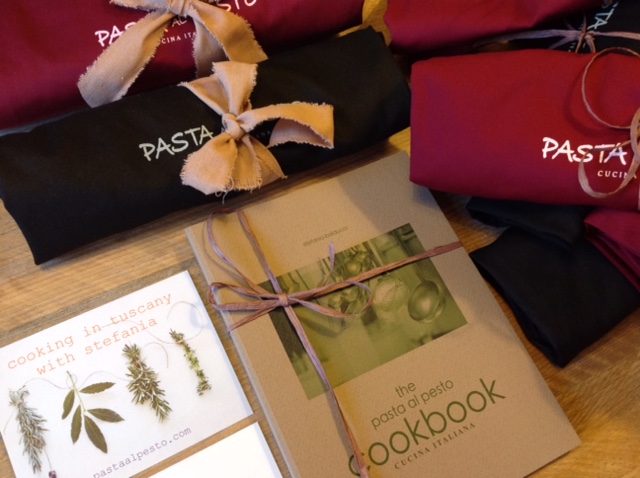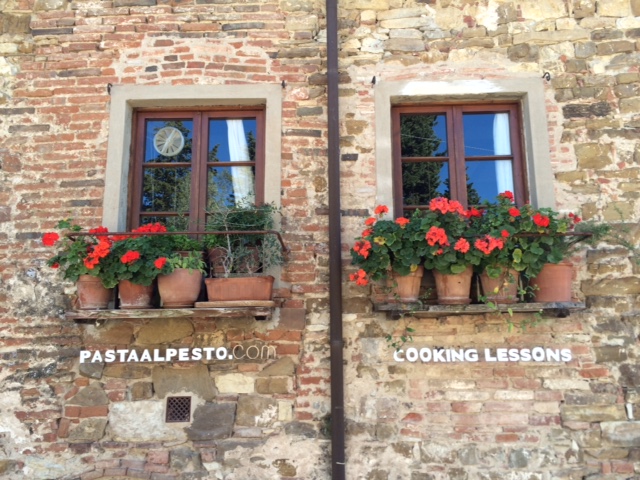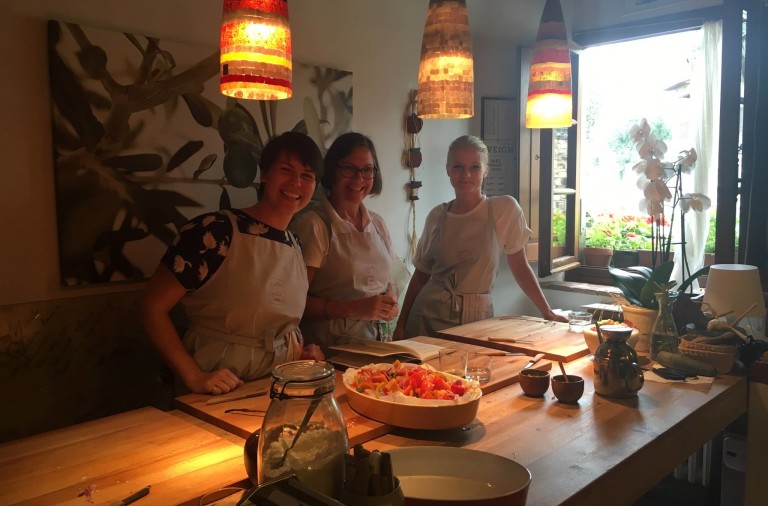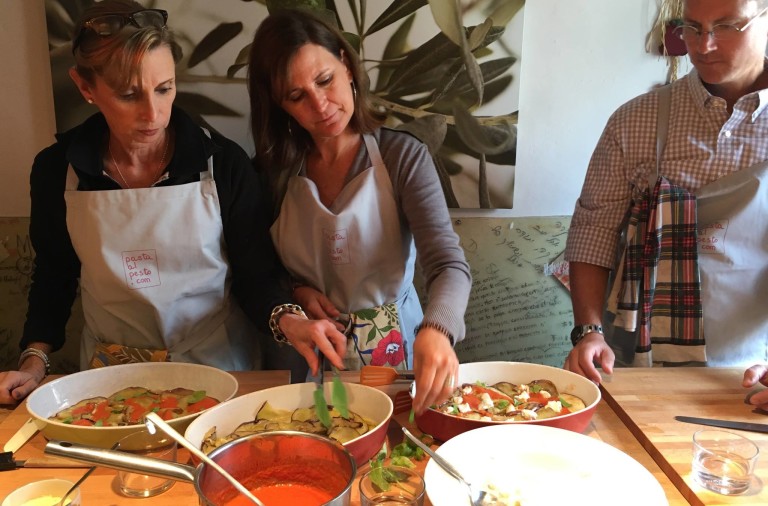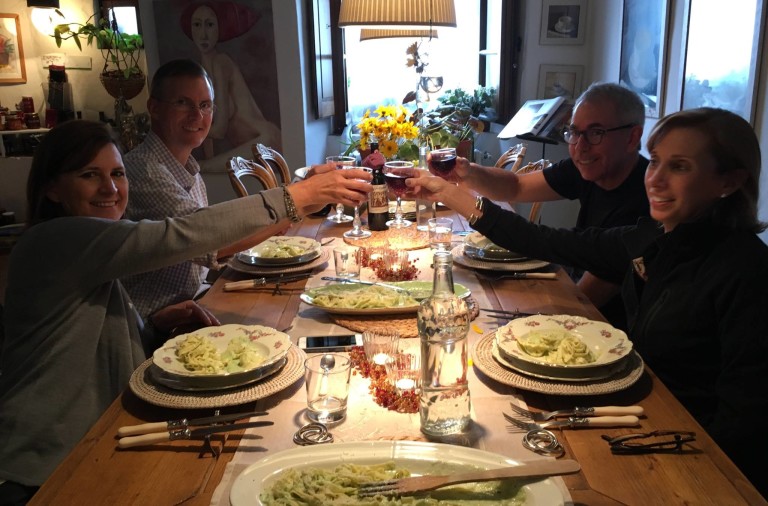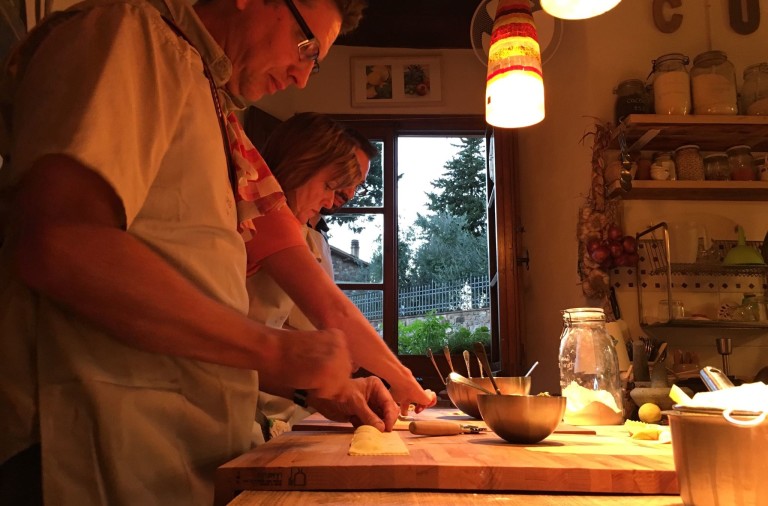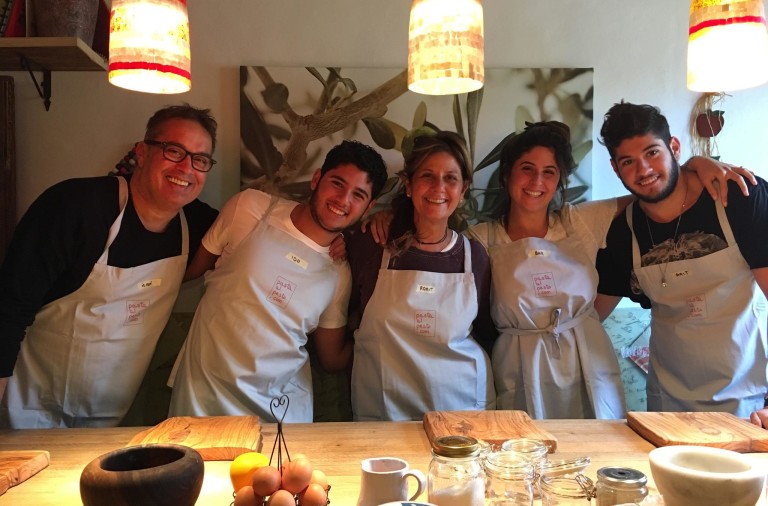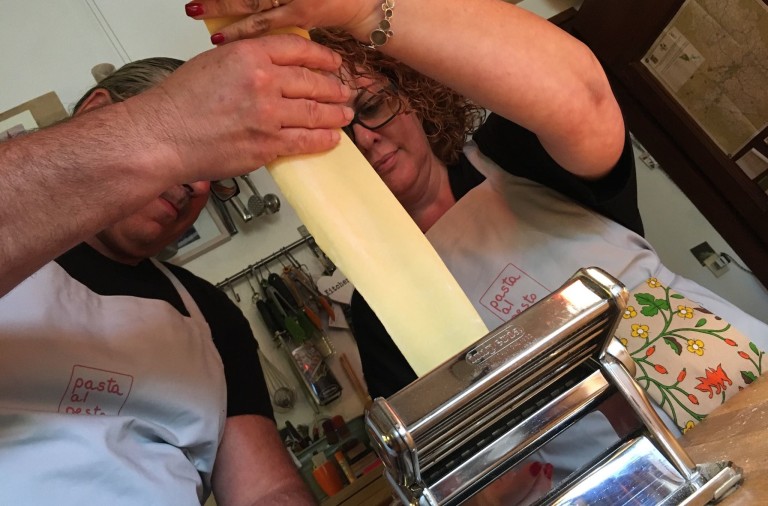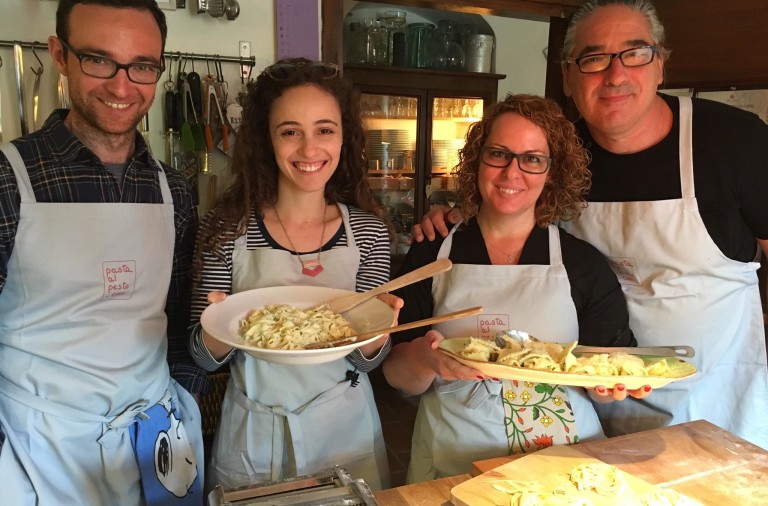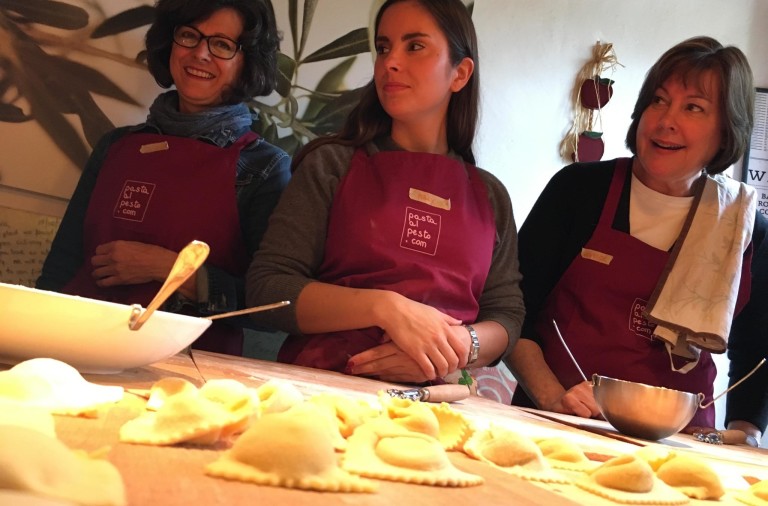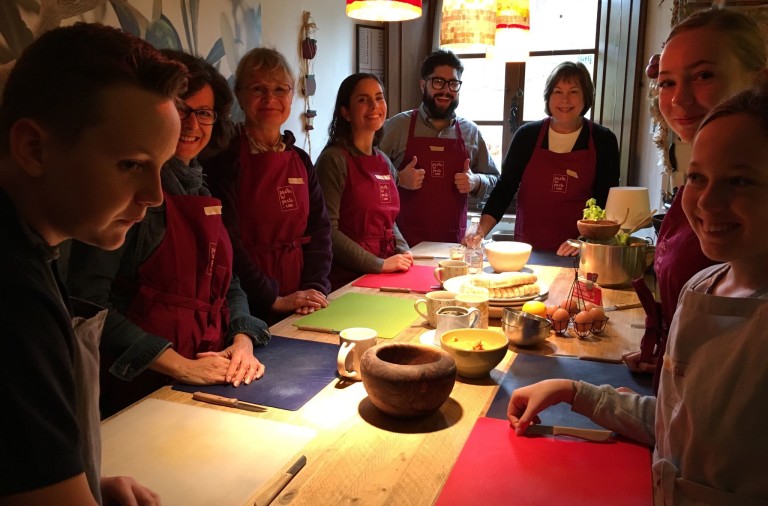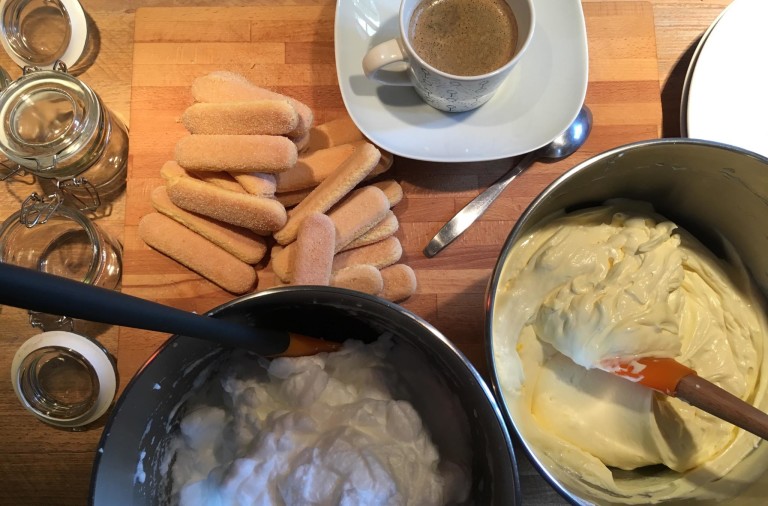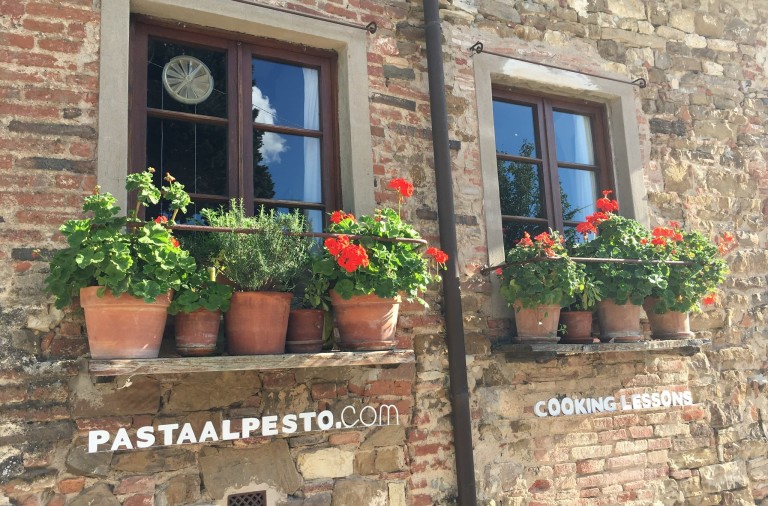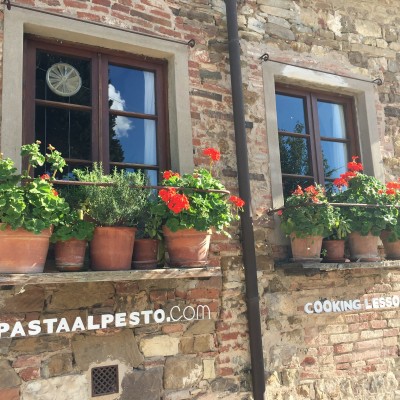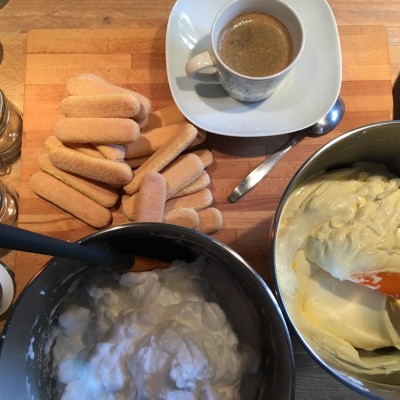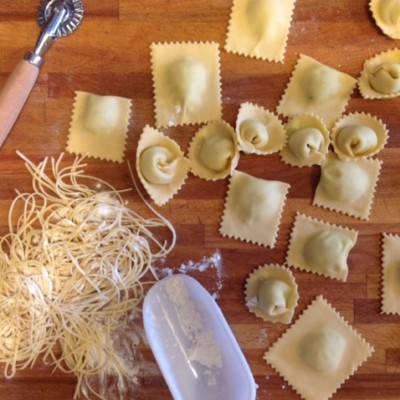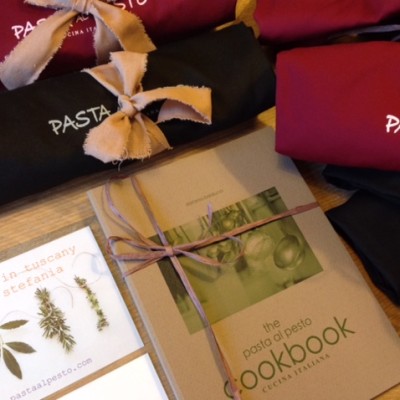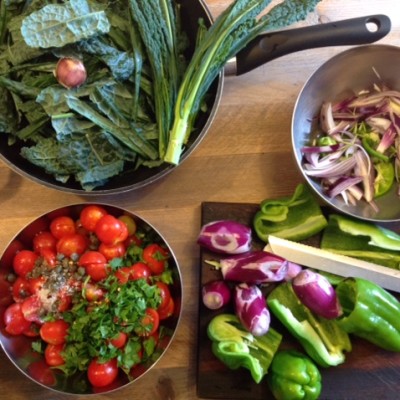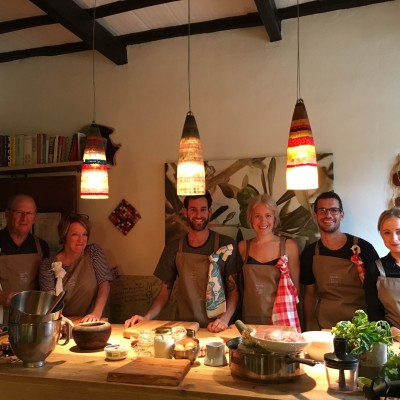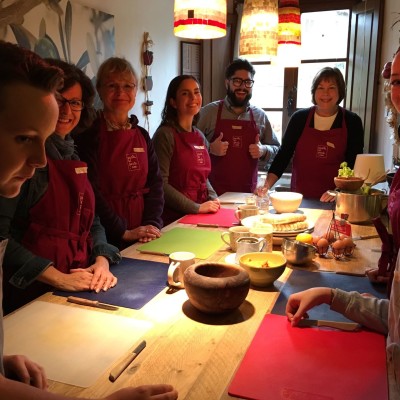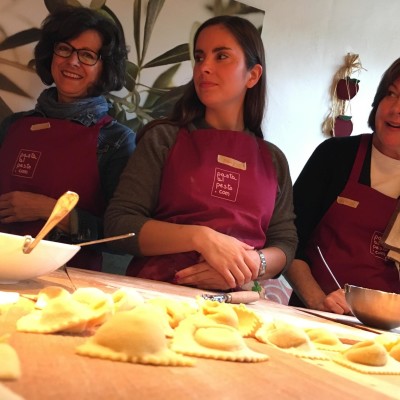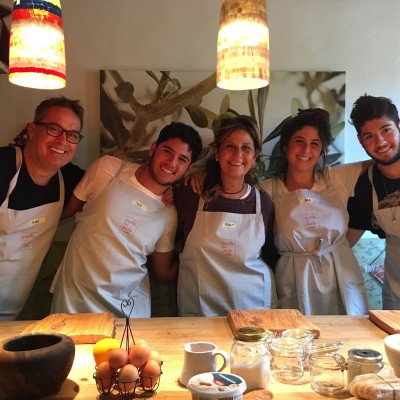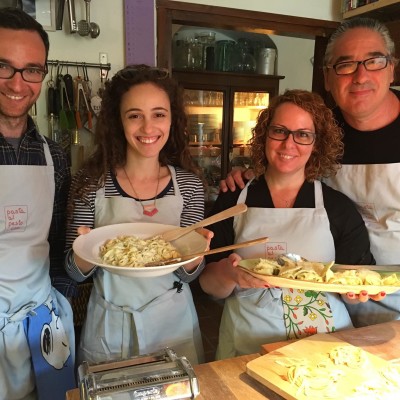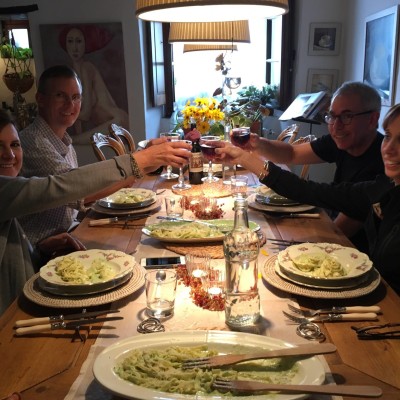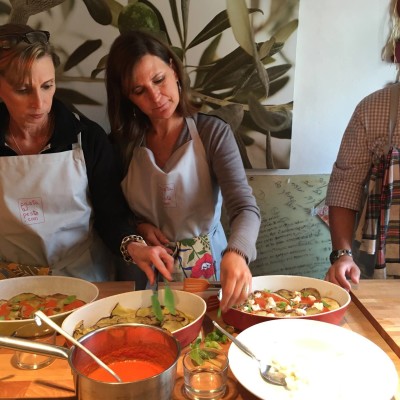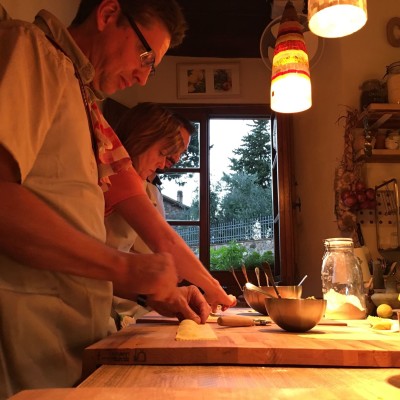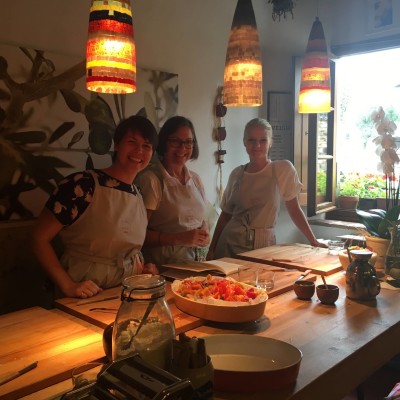Articolo disponibile anche in: Italian
The values at the base of Stefania Balducci’s cooking school are hospitality and respect for ingredients. The school, “pastaalpesto cooking” (www.pastaalpesto.com), was born in Holland in 2004. It has been located in Montefioralle (Greve in Chianti) since 2010. Here you can breathe an intimate family atmosphere and feel at home.
Stefania traveled through Umbria, Tuscany, England and Holland before planting roots in the Chianti territory with her school.
“It happened by chance, but I have always loved Tuscany where I worked in tourism and held my courses, even when I was living in Holland”.
Where does your passion for cooking come from?
“From my grandparents who taught me so much when I was a child; in the vegetable garden with grandpa, in the kitchen with grandma, while outside we grew tomatoes whose color and fragrance left its mark. Everything that I know and teach was born there and appears gradually, piece by piece”.
When did you first understand that food would be your job?
“I was in England where I lived for a short period. I cooked for my friends and a typical sense of Italian hospitality emerged. I realized I had a treasure in my hands and that food and hospitality would be my future”.
How did you pick the name “pastaalpesto”?
“Because I like pesto and jams. All of those jars in the cupboard are a treasure that each of us conserves at home”.
How are your courses run?
“They are open to groups from 4 to 8 students. Together we cook a complete menu, five courses, which we then eat”.
What is the principle ingredient?
“I start from vegetables. I am inspired by what I find at the market and in my garden and this gives direction to the rest of the menu”.
What does Chianti offer that is unique?
“Chianti is very similar to my birthplace, Umbria. This corner of Tuscany offers an enchanting framework and the strong bonding of good food and wine”.
Most of your students are foreigners. What is the recipe that they request the most?
“Definitely pasta, which we make by hand”.
Do different nationalities show in the kitchen?
“This is the most beautiful part of my job. In mixed groups each person has his own approach. After 40 minutes however, the food establishes a harmony and cultural differences disappear”.
In other words, the kitchen makes everyone agree?
“So it seems. This was the winning point of team building that the Dutch companies where I held cooking courses believed in”.
What lessons do you want your students to bring home?
“When they return home, I would like them to take care of themselves and their family by cooking. Then there is respect for the products, of seasonality and the recuperating of the frugality of typical farm cooking. I think that there is a way to draw out the soul of an ingredient. The menu should be based on the quality of the products available. If you can’t find good black cabbage, it is useless to make ribollita, for example. I like the idea that my students are familiar with each ingredient that they use”.
An example?
“Usually the green part of the leak and the external part of fennel are thrown out and instead should be used to prepare soup. In this way, you minimize waste just like they did in the farm kitchens”.
Luisa Carretti
